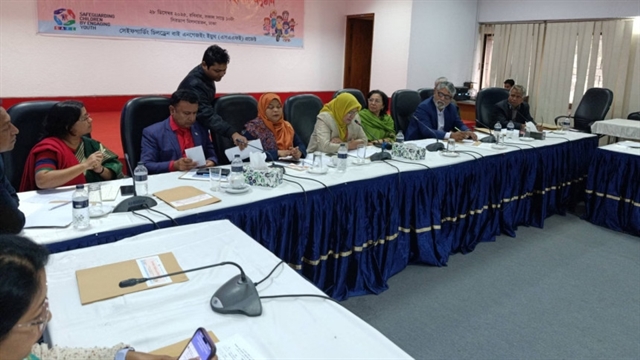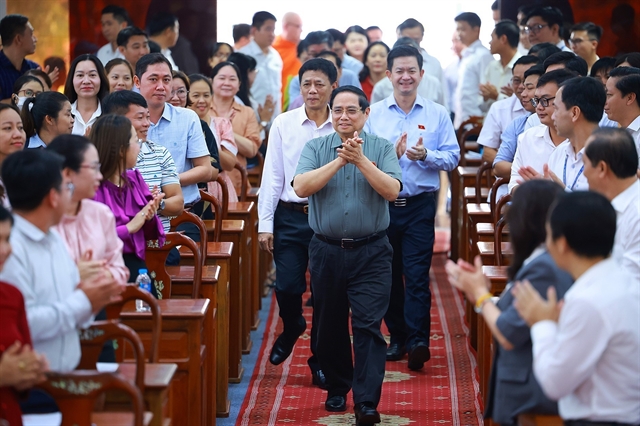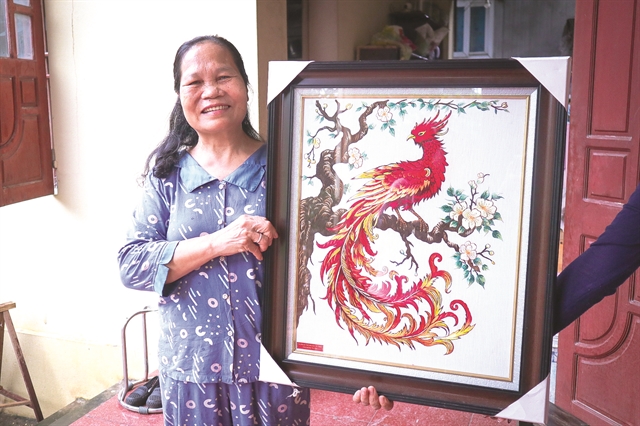 Features
Features

Việt Nam will submit a summary report on the Óc Eo - Ba Thê archaeological site to the UNESCO World Heritage Centre requesting its inclusion on the tentative list of World Heritage Profiles.
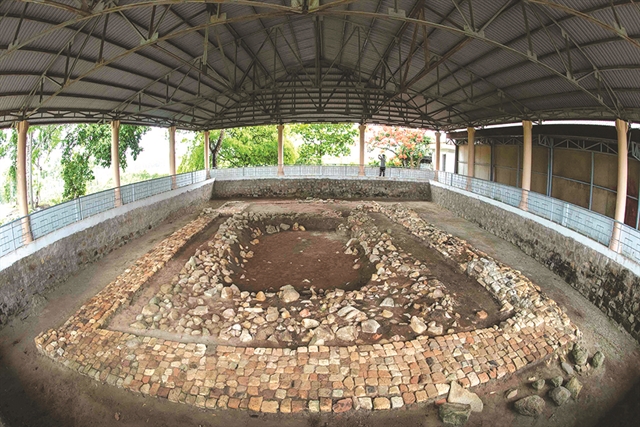
|
| Gò Cây Thị B relic in the Óc Eo - Ba Thê national special heritage site. Photo atv.org.vn |
One of the most prestigious archaeological sites in the country is set to undergo a lengthy period of restoration and preservation covering hundreds of hectares across the Mekong Delta.
The Óc Eo - Ba Thê national relic site in the southern province of An Giang mostly covers Óc Eo Town, Thoại Sơn District. Parts of the site are over 2,000 years old.
The renowned relic is believed to have been first excavated by French archaeologist Louis Malleret in 1944, and is believed to have been a prosperous commercial port of the once-powerful Phù Nam Kingdom two millennia ago.
Artefacts found in the area show an advanced civilisation with developed arts and crafts including jewellery and pottery making, as well as a system of canals and various temples and tombs built with bricks and stones. Several ancient Roman artefacts have also been uncovered at the site over the years.
Óc Eo culture was at its peak in the southern delta from the first to seventh centuries.
Through several archaeological excavations, Malleret also identified an ancient citadel and identified it as an ancient town, also known as Óc Eo port.
The name Óc Eo was given by him after the location of Óc Eo mound in Thoại Sơn when this relic was discovered and announced in the early 1940s.
In addition to being found in Thoại Sơn, Óc Eo cultural archaeological relics were also discovered in Tri Tôn and Tịnh Biên districts and several other towns in the province.
The relics in the region are extremely rich and diverse in terms of both style and material, giving an insight into the period’s religion, residencies, architecture, burial areas, ancient canals and waterways.
With such historical and cultural value, the heritage site has been recognised by the Ministry of Culture, Sport and Tourism as a national heritage site with three clusters of relics, including two monuments of architecture and art. The stone and the four-armed Buddha were certified in 1988, and the two archaeological sites of Nam Linh Sơn Tự and Gò Cây Thị in 2002.
The Director of the Óc Eo Cultural Relic Management Board, Nguyễn Hữu Giềng, said the new preservation plan was recently announced by the board under the provincial People's Committee's authorisation.
The plan will be implemented over 433 hectares, as identified in the Special National Monument Ranking Profile.
It aims to protect unearthed archaeological discoveries and the site relics, boost research and surveys, as well as expand the scope of archaeology to compile dossiers, edit records and clarify ideas related to the region, especially those connected to Óc Eo culture and civilization.
It also aims to preserve, upgrade and promote the Óc Eo - Ba Thê special national heritage to become an archaeological research zone to help identify the values of the site, contributing to socio-economic development, culture and tourism.
The plan will also help connect the relic site with important destinations in An Giang and the Mekong Delta region to create specific tourism products in terms of history, culture, tourism, river ecology, rural livelihoods, and tourism.
Director Giềng said the plan for preserving and restoring Óc Eo - Ba Thê was approved by the then Prime Minister Nguyễn Xuân Phúc.
"This provides a legal basis for removing obstacles and limitations of the previous plan. It is an effective tool for planning management and urban development investment in the area of Óc Eo Town and Thoại Sơn District," he said.
It is expected that in November 2021, An Giang will hold a ceremony to officially announce the Government's approval of the preservation plan.
According to the plan, a relic site on the foothills of Ba Thê Mountain (Zone A) with a total of 144 hectares will be targeted including Protected Area I (50ha) and Protected Area II (93ha).
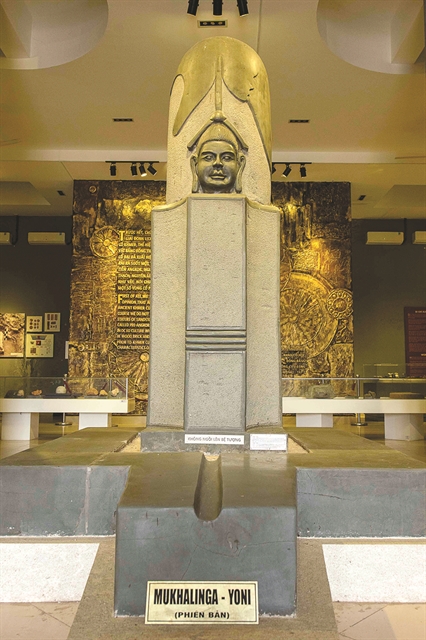
|
| A model of MukhaLinga - Yoni is displayed at Óc Eo Cultural Exhibition Centre in An Giang Province. — Photo baoangiang.com.vn |
The Óc Eo field area (Zone B) covers 289ha, including Protected Area I (IB), which is 151ha and Protected Area II (IIB), which covers 138ha.
Seeking UNESCO recognition
Deputy Prime Minister Vũ Đức Đam has recently assigned the Ministry of Culture, Sports and Tourism to take prime responsibility and coordinate with the Việt Nam National Committee for UNESCO to submit a summary report on the Óc Eo - Ba Thê archaeological site to the UNESCO World Heritage Centre requesting its inclusion on the tentative list of World Heritage Profiles.
The ministry will guide the People's Committee of An Giang to compile a scientific dossier on the relic site in accordance with regulations.
For some time, the ministry has been striving to complete a dossier on the relic site to submit to UNESCO for recognition as a World Cultural Heritage Site.
In late 2012, it assigned the Việt Nam Institute for Culture and Arts to complete and submit the dossier to UNESCO. Several workshops have been held to gather expert advice for the dossier.
"The Óc Eo - Ba Thê special national relic site contains numerous outstanding global values," according to experts and scientists at a workshop to discuss nominating Óc Eo - Ba Thê as a World Cultural Heritage Site, held by the People's Committee of An Giang in collaboration with the Southern Institute of Social Sciences and the Archaeological Association.
Associate Professor Đặng Văn Bài, vice chairman of the National Council for Cultural Heritage, said that the Óc Eo - Ba Thê site was proof of the unity of the cultural diversity of Southeast Asian countries.
"This is also a cultural space that has been playing a particularly important role in the meeting, exchanging and acculturating between major cultures in the world (East and West). In addition, the Óc Eo culture is also a link between the two most brilliantly developed civilisations in human history, China and India," he said.
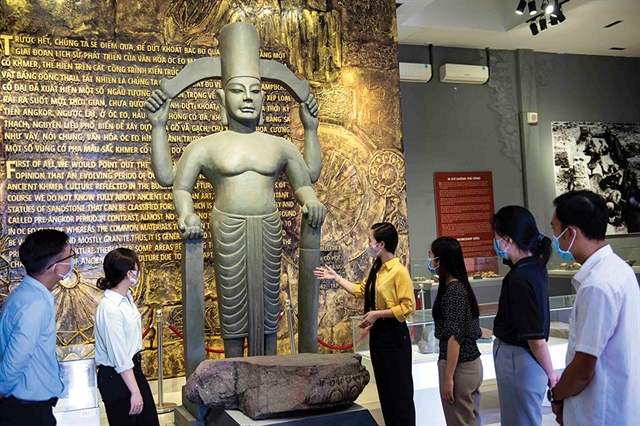
|
| Visitors admire a statue found belonging to ancient Óc Eo culture. — Photo baoangiang.com.vn |
Meanwhile, Prof Tống Trung Tín, chairman of the Việt Nam Archaeological Association, said that the site showed a strong interaction with other world major cultures such as Buddhism and Hinduism, as well as with Chinese, Middle Eastern and Mediterranean cultures.
Researchers and scientists have highlighted the important role of Óc Eo culture in the formation of ancient nations in the Southern region in the early centuries of the common era.
From the late 1990s to 2011, many research programmes with local funding and international cooperation were conducted at the site. Initial results helped recreate the basic appearance of an ancient city with religious architectural and residential relics, making a significant contribution to promoting cultural heritage.
Vice Chairman of An Giang Provincial People's Committee Trần Anh Thư said that along with Việt Nam's eight other World Heritage Sites that had been honoured by UNESCO, the creation of a scientific dossier for the site demonstrated the country's great contribution to enriching humanity's cultural heritage, creating a national brand, and introducing a beautiful image of the country to the world.
An Giang in southwest Việt Nam has an abundance of historical and cultural relics, and authorities and local residents have always paid much attention to cultural tourism.
The Óc Eo site not only receives many researchers and archaeologists but also attracts many local and foreign tourists who come to see what they view as one of the jewels in the country’s cultural crown. With convenient transport infrastructure, a mysterious beauty and some of the most brilliant cultural heritage in the nation, the destination will create investment opportunities for those who desire to preserve the site as one of the special features of Việt Nam. VNA/VNS

|
| Some of the artefacts found in Óc Eo - Ba Thê archeological site being displayed at the Óc Eo Exhibition Centre. Photo baovanhoa.com.vn |

